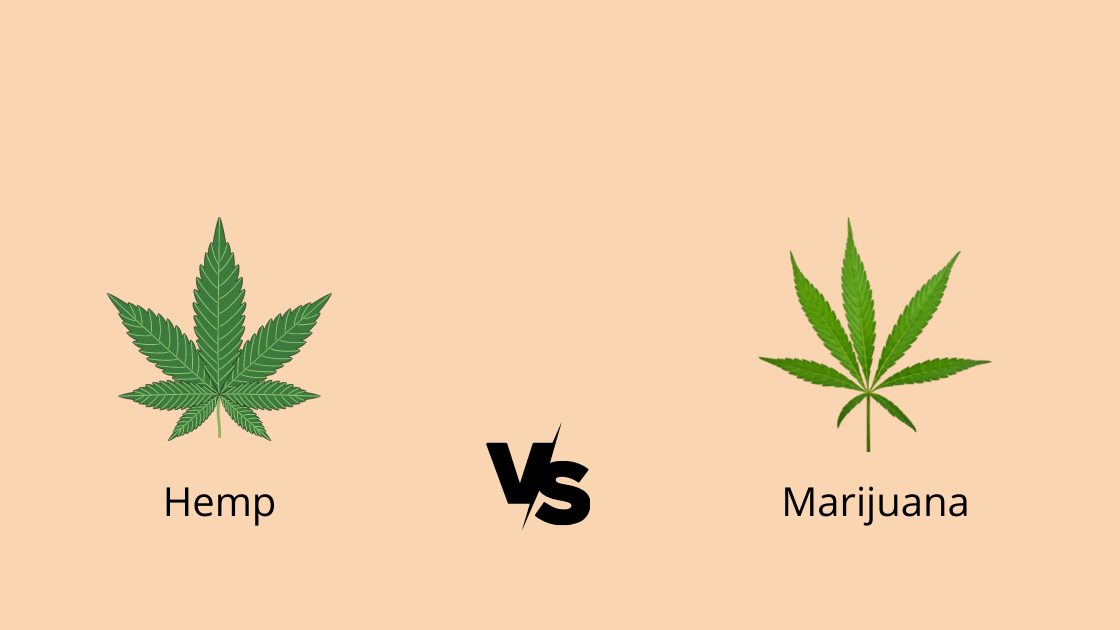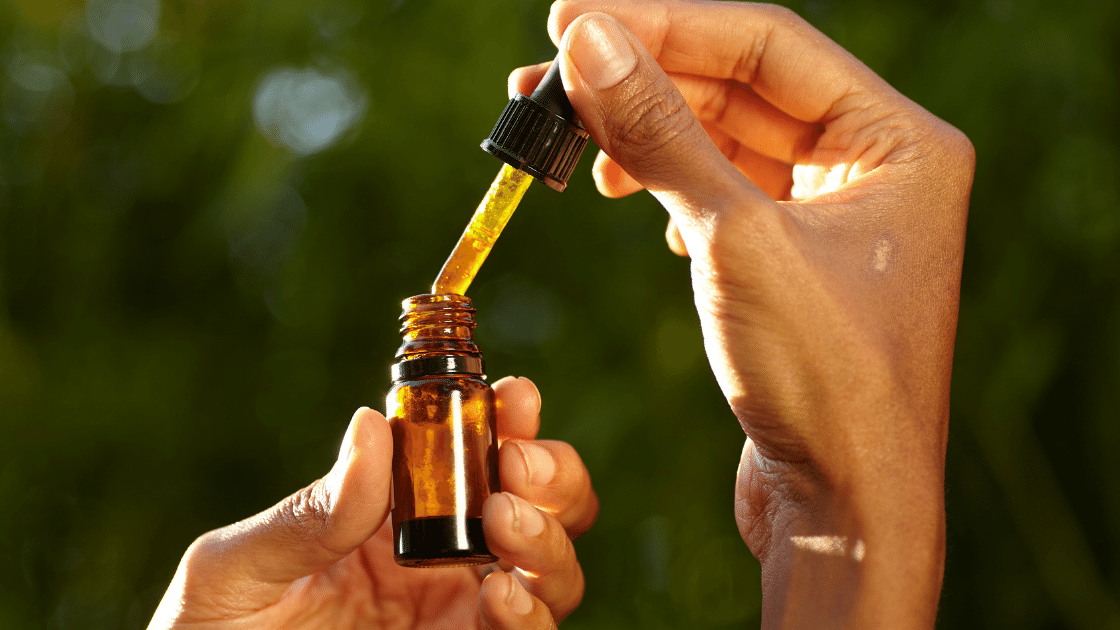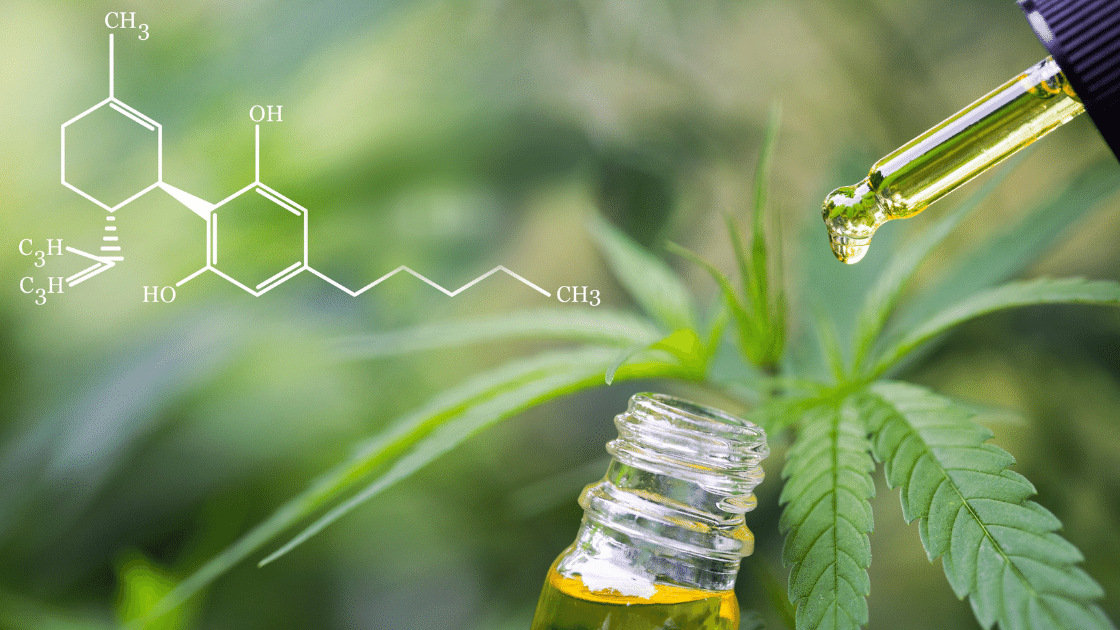If you’ve been reading about marijuana and learning more and more about this versatile plant, you probably know that it belongs to the Cannabaceae family and is used to make a wide variety of products. These products have become quite popular among both recreational and medical consumers and their popularity is only expected to rise as the global cannabis market is expected to reach $176 billion by 2030.
But is this the only plant in the Cannabaceae family? Definitely not. In fact, another type of cannabis in the botanical class of the Cannabis sativa cultivars, called hemp, has often been mistaken with marijuana. While they’re both cannabis, they're not the same, and in this article, we’ll explain how they differ.
Aren’t Hemp and Marijuana the Same Thing?
When talking about hemp vs marijuana, we first need to mention that even though they both come from the same family of plants, they differ greatly, the main difference being the cannabinoid content. As you may already know, cannabis plants contain a number of cannabinoids among which the most popular are tetrahydrocannabinol (THC) and cannabidiol (CBD). The former is the intoxicating cannabinoid, while the latter is the non-intoxicating and sedative cannabinoid.
So, the main difference when it comes to hemp vs marijuana is the cannabinoid content, specifically the content of THC. Let’s find out why the content of this specific cannabinoid matters so much.
What Is Hemp?

Hemp, also known as industrial hemp, is a term used to describe cannabis plants with THC amounts lower than 0.3%. This insignificant amount of THC means that hemp is non-intoxicating, so it won’t get you “high”. Historically, this plant was used mostly for industrial purposes since it is pretty durable and fibrous.
Hemp plants grow tall and slim, reaching a height of over 18 feet. The leaves of the plant are skinny and mostly concentrated at the top of the stalk. The hemp plant is a flowering plant and the buds of the flower are rich in trichomes and cannabinoids. The color of the plant can vary between light green and a grayish hue.
Nowadays, apart from its industrial use, the hemp plant is also used in the production of CBD products that can help manage soreness, discomfort, anxiousness, and help you achieve other wellness goals, which is why the plant has become so popular.
What Is Marijuana?

Marijuana, on the other hand, is a term used to describe different varieties of the cannabis plant that contain THC levels over 0.3%. Compared to hemp, marijuana is intoxicating and does make most users “high” which is how this feeling is often described.
Generally, you can find three types of marijuana plants and their appearance varies from strain to strain. Indicas are short and stocky, and don’t grow much taller than 6 ft, while sativas are taller and leaner and can grow as high as 20 ft. The third type is the hybrid type and its appearance depends on whether the plant is indica or sativa-dominant.
Marijuana is also known through its many names, such as ganja, weed, pot, green, grass, bud, and others.
Legality Around Hemp and Marijuana
While the main difference between hemp and marijuana is the THC content, another important difference is the legality of these two plants.
The industrial hemp plant was legalized with the passing of the Farm Bill back in 2018. This bill allowed cultivators to legally grow the industrial hemp plant throughout the United States if the plants contain less than 0.3% THC. Moreover, the bill also legalized all hemp-derived CBD products on a federal level which further expanded the CBD market.
Marijuana, however, isn’t legal on a federal level. While some states have legalized it both medically and recreationally, marijuana is far from being legal on a federal level. Therefore, you should always check the laws in the state before you decide to visit it. Keep in mind that some states have exceptions when it comes to medical marijuana users.
Common Uses for Hemp
As we’ve mentioned above, the hemp plant has been used for thousands of years to create many different products, such as clothes, paper, ropes, shoes, carpets, textiles, animal feed, and food products such as hemp milk, hemp seed, hemp oil, and in recent years even hemp protein powder.
As a crop, hemp tends to grow much faster than other crops, which is why people have been taking advantage of this feature and using it to make textiles and paper more sustainably.
Moreover, hemp seeds are being incorporated into our diets more than ever before as they’re a complete protein that’s high in fiber. The seeds hardly contain any cannabinoids since CBD is found in higher concentrations in the flowers, stalks, and leaves.
Hemp has also been used to make CBD products such as CBD topicals, CBD edibles, CBD oil, CBD products for pets, and others. These products have become quite popular in the wellness industry as they may help patients who experience extended soreness, different types of mood disorders, and other conditions.
Common Uses for Marijuana
As the cannabis market expands due to the increase in states that have legalized marijuana, the plant has become quite popular among both recreational and medical users.
Recreational users have been experimenting with different types of marijuana products ranging from joints and blunts to vapes, tinctures, oils, dabs, softgels, and edibles such as cakes, gummies, and other sweets, and trying out all the novelty products that emerge on this ever-expanding market. They generally enjoy using marijuana in social settings.
Medical users can also choose from a plethora of marijuana products and consult a licensed cannabis physician about how they can incorporate them into their treatment.
Cultivation Differences
As marijuana and hemp differ in size and in height, it’s obvious that they’d need to be cultivated slightly differently. The most important factor in hemp or marijuana cultivation is the spacing between two plants.
Marijuana plants require more space between each plant, so you need to make sure that you leave at least 6 feet between each plant. However, hemp plants are on the smaller side, so you can plant them within 4 inches of each other.
It’s also important to remember that hemp and marijuana have different growth rates. Hemp needs between 108-120 days to reach full maturity, while some marijuana strains will be fully grown between 60-90 days. Finally, marijuana requires warm and humid conditions to thrive, while hemp is very adaptable and can grow in different weather conditions.
Buying Hemp vs Marijuana
In states where marijuana is legal for both recreational and medical use, both hemp and marijuana can be found at licensed dispensaries. These shops will sell anything from joint wrappers to different types of edibles, dabs, and vapes, made of THC, CBD, or both.
Hemp products, on the other hand, can be bought in stores and pharmacies, as well as through online shops which deliver these products to your home. At Nuvita CBD, you can choose from a wide variety of full-spectrum CBD, CBG, and even CBN products that range from softgels and CBD oil, to rollers, distillates, and pet products.
You can even decide to try cultivating hemp, marijuana, or both, in which case you‘ll need to either order the seeds online or buy them from a seed bank together with growing pots, growing lights, and other growing essentials. Another option would be to clone your marijuana plants from a mother plant. Whichever option you decide to try, growing your own cannabis is a great experience and it’s very rewarding.
FAQ
Below, we’ve answered the most commonly posed questions related to hemp vs marijuana.
Can You Smoke Hemp Flowers and Marijuana Flowers?
As both hemp and marijuana are cannabis plants, you can smoke the flowers of either one, depending on the effects you’re after. If you want to experience intoxicating effects, go for the marijuana, however, if you’re after a sedative and relaxing experience, smoke the hemp plant.
Do Hemp Seeds Have THC?
Similar to other parts of the hemp plant, hemp seeds also carry some amounts of THC but keep in mind that this is often a small and insignificant amount so it won’t give you a high or produce euphoric feelings.
Does Hemp Have CBD?
Hemp contains high doses of CBD, although the exact amount of CBD will depend on the strain. Generally, industrial hemp contains between 4-6% of CBD, while specially grown hemp varieties can have as much as 20-25% CBD and these are mostly used to produce CBD oil.
What’s the Difference Between Hemp CBD vs. Marijuana CBD?
CBD, or cannabidiol, is similar both in hemp and marijuana, the only difference being the amount of CBD that’s present in each plant. CBD is dominant in hemp but not in marijuana.
Is Hemp Legal in the Us?
Hemp is legal in the US on a federal level and it has been legal since the passing of the Farm Bill back in 2018. The only requirement is that hemp should contain less than 0.3% THC to be federally legal. Hemp with higher amounts of THC is federally illegal and it’s classified as marijuana.
Is Marijuana Legal in the Us?
Marijuana isn’t legal in the US on a federal level, though certain states have legalized it for medical use, recreational use, or both. Marijuana is legal for medical use in 36 US states, while recreational marijuana is completely legal in just 18 states.
So, if you’re unsure whether a state you plan to travel to has legalized marijuana or not, it’s always a good idea to check the state laws before you travel. And if you’re a medical marijuana user, make sure that you take your medical marijuana ID with you so you’ll have proof that you need to use it.




Leave a comment
This site is protected by reCAPTCHA and the Google Privacy Policy and Terms of Service apply.